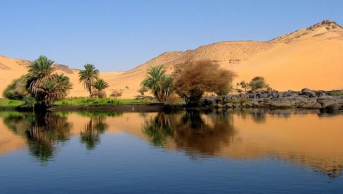Testing the Limits of the Cooperation in the Indus Basin: On the Revival of Permanent Indus Commission

After negotiations lasting for nearly a decade, India and Pakistan, with help the International Bank for Reconstruction and Development (IBRD, today’s World Bank), agreed on the ‘Treatybetween the Government of India and the Government of Pakistan concerning the most Complete and Satisfactory Utilization of the Waters of the Indus System of Rivers’, also known as the Indus Treaty, on September 19, 1960. Along with the IBRD, the Treaty was signed by Prime Minister Jawaharlal Nehru of India and President Ayub Khan of Pakistan.Having survived all the ups and downs in India-Pakistan relations since then, including several wars; Indus Treaty is regarded as one of the most successful and durable international agreements in terms of transboundary water cooperation. Since its inception, Parties met more than hundred times to discuss matter of implementation of the Treaty. However, the treaty now faces the most serious test as the grip of water scarcity in both countries gets tighter.
The main text of the Indus Waters is rather short with only 12 Articles. However, further details on, inter alia, hydroelectric production, irrigation, transitional arrangements, storages, settlements of disputes, were made in a number of annexes. The backbone of the Indus Treaty is division of Indus system into two. According to the Indus Waters Treaty, ‘all the waters of the Eastern Rivers shall be available for the unrestricted use of India’ (Article 2.1). These Eastern Rivers are the Beas, the Ravi and the Sutlej. On the other hand, the Western Rivers, namely the Indus, the Chenab and the Jhelum were given to Pakistan.
According to Article 8, a Permanent Indus Commission shall be created. The article reads ‘India and Pakistan shall each create a permanent post of Commissioner for Indus Waters, and shall appoint to this post, as often as a vacancy occurs, a person who should ordinarily be a high-ranking engineer competent in the field of hydrology and water-use. Unless either Government should decide to take up any particular question directly with the other Government, each Commissioner will be the representative of his Government for all. matters arising out of this Treaty, and will serve as the regular channel of communication on all matters relating to the implementation of the Treaty, and, in particular, with respect to: i. the furnishing or exchange of information or data provided for in the Treaty; and ii. the giving of any notice or response to any notice provided for in the Treaty, iii. The status of each Commissioner and his duties and responsibilities towards his Government will be determined by that Government. The two Commissioners shall together form the Permanent Indus Commission and meet at least once a year.The Commission appeared to be effective for nearly six decades in managing implementation and observance of the Treaty stipulations in a smooth fashion.
Despite continuous work, however, the Commission was unable to settle the more recent complaints of Pakistan, a crowded country which is increasingly feeling grave impacts of water scarcity, over the construction of hydroelectric power plants being built by India, namely the Kishenganga on Jhelum (330 megawatts) and Ratle on Chenab Rivers (850 megawatts). As mentioned above, these two rivers are designated as Western Rivers, to which Pakistan would have unrestricted use, with exceptions specified in the Annexures to the Treaty. In Indian view, these constructions are in accordance with the conditions set out in the Treaty, whereas Pakistan consider these as breaches of the Treaty. Further, disagreement also arises in terms of the arbitration mechanism. Pakistan wants to take the issue before an international court while India wants a neutral observer.
A peak of crisis occurred in September 2016 when India suffered from a terrorist attack in Uri, in the Indian-administered state of Jammu and Kashmir.On September 19, four heavily armed militants attacked Indian soldiers near the Line of Control. 19 Indian soldiers were killed during the attack. Pakistan was accused by Indian authorities of providing continued and direct support to terrorism and terrorist groups. Indian Prime Minister Narendra Modi reportedly said ‘blood and water cannot flow together’. On 26 September, the Indian government stated it would exercise its rights under the 1960 Indus Waters Treaty to the full, would expand its utilization of its rivers flowing through Jammu and Kashmir, and further decided to suspend working of the Permanent Indus Commission.
Nearly after six months of silence, two parties met in late March,albeit achieving little progress. Meanwhile, the World Bank, as the original broker of the Indus Treaty, invited delegations from two countries in order to discuss alternatives of resolution. A three-day meeting was scheduled on 11-13 April, but India refused to send its delegation. Thus, World Bank’s recent mediation attempt apparently end in futility. While Pakistan accuses India of buying time in order to complete its contentious projects, India sees Pakistan as a country providing support to terrorism targeting India. It remains unknown whether the old Indus Treaty framework can survive this latest wave of disruptions.






